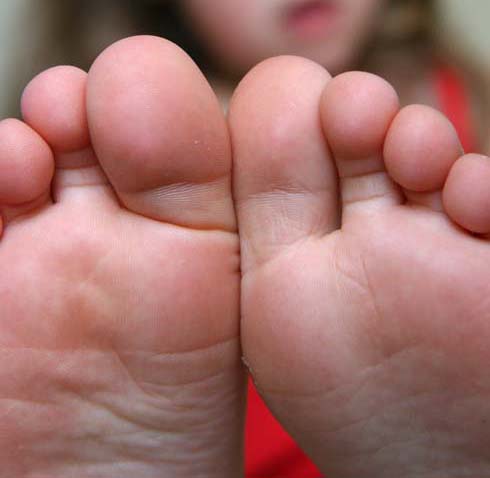Foot Disorders

•Ankle Injuries
•Athlete's Foot
•Bunion
•Calluses
•Corns
•Diabetic Foot
•Flat Foot
•Hammertoes
•Heel Pain
•Athlete's Foot
•Bunion
•Calluses
•Corns
•Diabetic Foot
•Flat Foot
•Hammertoes
•Heel Pain
•High Arched Foot
•Ingrown Toe Nails
•Morton's Neuroma
•Osteoarthritis
•Plantar Fascitis and other Heel Pain
•Shin Splints
•Soft Tissue Masses
•Stress Fracture
•Subungual Exostoses
•Warts
•Ingrown Toe Nails
•Morton's Neuroma
•Osteoarthritis
•Plantar Fascitis and other Heel Pain
•Shin Splints
•Soft Tissue Masses
•Stress Fracture
•Subungual Exostoses
•Warts
When to call a Podiatrist
---------------------------------------------------
Persistent pain for a long period of time
Changes in skin or nails on feet
Severe cracking, scaling or peeling
Blisters on your feet
Signs of an Infection
---------------------------------------------------
1. Increased pain, swelling, redness, tenderness, or heat.
2. Red streaks extending from the affected area.
3. Discharge or pus from an area on the foot.
4. Foot or ankle symptoms that do not improve after two weeks of treatment with a non
5. Spreading of an infection from one area of the foot to another, such as under the nail bed, skin under the nail, the nail itself, or the surrounding skin.
6. Thickening toenails that cause discomfort.
7. Heel pain accompanied by a fever, redness (sometimes warmth), or numbness.
8. Tingling in the heel; persistent heel pain without putting any weight or pressure on your heel
9. Pain that is not alleviated by ice or over-the-counter painkillers (such as aspirin, ibuprofen or acetaminophen).
10. Diabetics with poor circulation who develop Athlete's Foot
---------------------------------------------------
Persistent pain for a long period of time
Changes in skin or nails on feet
Severe cracking, scaling or peeling
Blisters on your feet
Signs of an Infection
---------------------------------------------------
1. Increased pain, swelling, redness, tenderness, or heat.
2. Red streaks extending from the affected area.
3. Discharge or pus from an area on the foot.
4. Foot or ankle symptoms that do not improve after two weeks of treatment with a non
5. Spreading of an infection from one area of the foot to another, such as under the nail bed, skin under the nail, the nail itself, or the surrounding skin.
6. Thickening toenails that cause discomfort.
7. Heel pain accompanied by a fever, redness (sometimes warmth), or numbness.
8. Tingling in the heel; persistent heel pain without putting any weight or pressure on your heel
9. Pain that is not alleviated by ice or over-the-counter painkillers (such as aspirin, ibuprofen or acetaminophen).
10. Diabetics with poor circulation who develop Athlete's Foot
